Ventilation plugs and silencers are types of fittings for air exchange systems. Well-assembled ventilation implies the use of these elements, which simultaneously carry a functional and decorative load.
Purpose of ventilation silencers

In factories, warehouses, in large entertainment centers, very powerful ventilation units are installed, characterized by a high level of noise. The more powerful the equipment, the more noise it produces. The problem is solved by installing ventilation silencers. The price of a ventilation silencer is not high, and the effect of its presence is very significant. The best results are shown by devices at an air speed of 4 - 12 m / s and in the range of sound vibrations of 500 - 4000 Hz.
Ventilation silencers are designed to reduce the noise generated by air movement through ventilation ducts.

Install the muffler immediately after the noisiest node or in front of the room. The correct installation is monitored by measuring the noise in the switched on system.
Installation locations:
- at the exit from a noisy room;
- after noisy equipment;
- in front of and behind the fan.
A sound attenuator installed without preliminary calculations can significantly increase the sound load in the room.
In the course of acoustic calculations, it is determined:
- the length of the ventilation silencer;
- channel area (for a plate model);
- channel cross-section (for tubular model).
Silencers are installed in ventilation systems of any type except those through which radioactive air filled with mechanical particles, vapors of aggressive chemicals, high humidity or temperatures above +90 degrees passes. One system can use from one to 20 - 30 devices.
Silencer types
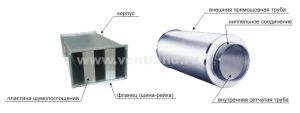
There are several types of ventilation silencers:
- lamellar or rectangular;
- tubular.
Lamellar sound attenuators for ventilation are made of galvanized steel rectangular section, divided by ribs along. Distances between them are from 7.5 to 30 cm. The ribs are made of basalt slab and covered with soundproofing material (mineral wool, glass wool, felt). If necessary, some of the ribs can be removed, but the smaller the distance between the ribs, the higher the noise insulation. At the same time, the resistance to air flow increases, in order to reduce it, the surfaces of the ribs are treated with plastic or anti-abrasive material. So that, cutting into the ends of the ribs, the air does not create an additional hum, they are equipped with fairings.
They are used in systems with ventilation ducts with a diameter of at least 30 cm. They can be mounted vertically or horizontally. Air with a temperature of no more than 70 degrees Celsius can be passed through the plate ventilation silencer.
Tubular ventilation silencers are used in systems with ventilation ducts no more than 50 cm in diameter. Their design is very simple: two steel tubes (rectangular or circular) installed concentrically. The inner tube is perforated, the outer one is solid. Sound insulation with a layer of 5 cm is laid between the walls of the pipes. The denser the material, the more effective the sound absorption. Sound insulation is installed in the form of soft, semi-rigid mats or rigid slabs.The standard length of the sound-absorbing section is 50 - 90 cm.
For round ducts, tubular sound attenuators are more often used, and for rectangular (industrial) - plate.
When the device is installed, the noise in the room located near the ventilation equipment must comply with the sanitary standards for this type of room.
The price of a sound attenuator for ventilation depends on its length. Standard products are available in 60, 90 and 120 cm lengths. But according to the individual order, silencers for ventilation of any size and diameter are made. In this case, the price is calculated on a case-by-case basis.
Purpose of ventilation plugs
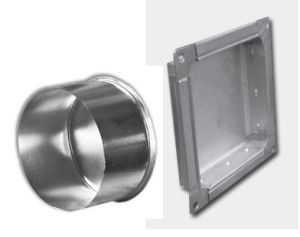
Ventilation plugs are used to tightly seal the air duct circuit.
Functions of vent plugs:
- protection of the system from dirt, water, penetration of insects and rodents, dust;
- overlapping a separate branch of air ducts from the general system;
- regulation of air intake into the room;
- prevention of air movement along the ducts.
The shaped product prevents clogging of air ducts, extends their service life without additional cleaning, and ensures safety. In some ventilation systems, such as saunas, plugs are used to regulate the air flow.
To ensure that the vent plug fits snugly into the duct, it is sized to fit. The plug seals the pipe hermetically and withstands the pressure of the air circulating in the system.
Manufacturing and installation of plugs
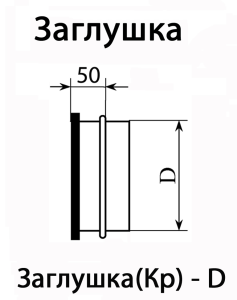
Caps of various sizes and shapes are produced for all existing types of air ducts. In addition to round plugs for ventilation, there are rectangular and square. Round ventilation plugs are available in standard sizes, rectangular ones are made to order according to the exact dimensions of the ducts.
The materials of the ventilation plugs are in accordance with the standards for ventilation ducts. As a rule, fittings are made of galvanized steel. Zinc plating extends the life of the vent plug and protects against corrosion. More expensive vent plugs are available in stainless steel.
Sheet metal thickness 0.5 - 1.2 mm.
When installing plugs in the ventilation system, the following types of connections are used:
- nipple is the most common;
- on rubber washers;
- on the flanges from the corner.
Round and square ventilation plugs are located in prominent places, so many manufacturers pay special attention to their decorative effect.
Ventilation plugs for baths and saunas
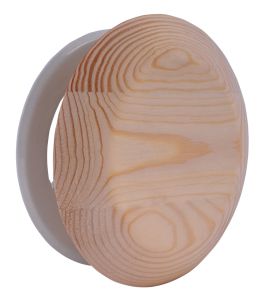
In baths and saunas, round ventilation plugs are used to decorate the outlet of the ventilation duct and regulate the air flow. A plug is usually installed on the outlet of ventilation ducts with a diameter of 10, 12.5 and 16 cm in the ceiling or wall.
The plugs are equipped with a decorative flap, which, when rotated, changes the intensity of the air flow. Valves for ventilation plugs for a sauna are made of special types of wood that do not rot in the humid and hot atmosphere of the bath and do not emit tar:
- Pine;
- Linden;
- cedar;
- alder;
- aspen.
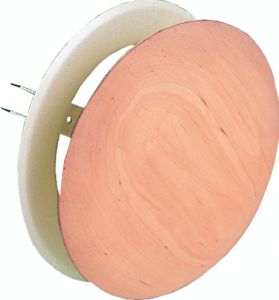
The wood valve looks very neat and stylish, its color is matched to the tone of the wood finish of the walls of the sauna. The body is made of metal coated with a polymer layer that prevents corrosion.
Ventilation plugs are used as outlets for natural and forced ventilation. They are sold complete with fasteners and instructions. Products of Russian and Finnish manufacturers are presented on the market.
Special production technologies ensure a long service life of products.








